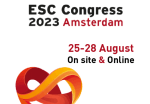Aortic stenosis shares risk factors with coronary artery disease (CAD), and its prevalence varies according to age, reaching approximately 50% or more in some registries. Deciding when to treat and the need for percutaneous intervention presents a challenge. It has been established that epicardial stenosis at proximal level, or the medial segment, requires intervention, especially<a href="https://solaci.org/en/2024/01/30/coronary-artery-disease-in-tavr-unsolved-dilemma/" title="Read more" >...</a>
Clopidogrel Monotherapy Beyond 12 months: Long Term Analysis of the STOPDAPT-2
Short dual antiplatelet therapy (DAPT) has shown benefits in patients receiving drug eluting stents (DES), reducing bleeding with no concomitant increase in major adverse cardiovascular events (MACE). Traditionally, the therapeutic window was limited to monotherapy with P2Y12 inhibitors during the first year and there are few data on short DAPT followed by long term monotherapy<a href="https://solaci.org/en/2024/01/29/clopidogrel-monotherapy-beyond-12-months-long-term-analysis-of-the-stopdapt-2/" title="Read more" >...</a>
LIFE-BTK | Critical Limb Ischemia: Use of Bioresorbable Scaffold in Infrapatellar Lesions (LIFE-BTK)
Advanced stages of peripheral artery disease cause significant limitations in patients, such as critical limb ischemia (CLI), which manifests with resting pain and gangrene or ulcers of difficult resolution. Uncontrolled progression of this pathology might lead to major amputation, reduced life expectancy and increased healthcare costs. Prior research on infrapopliteal territory have shown contradicting results.<a href="https://solaci.org/en/2024/01/19/life-btk-critical-limb-ischemia-use-of-bioresorbable-scaffold-in-infrapatellar-lesions-life-btk/" title="Read more" >...</a>
Cilostazol in Diabetic Patients with Endovascular Peripheral Revascularization: One Step Beyond Symptom Improvement
In patients with peripheral vascular disease (PVD), the presence of diabetes has been significantly associated with increased failure of critical lower limb ischemia (CLI) treatment, and higher incidence of amputation. This relationship has been attributed mainly to comorbidities and patient characteristics, concomitant peripheral neuropathy and marked microvascular alteration. Also, a high proportion of these patients<a href="https://solaci.org/en/2023/11/24/cilostazol-in-diabetic-patients-with-endovascular-peripheral-revascularization-one-step-beyond-symptom-improvement/" title="Read more" >...</a>
Optimal Duration of DAPT with Oral Anticoagulation After PCI?: 1 Month vs. 3 Months
While the benefits of dual antiplatelet therapy (DAPT) with aspirin and a P2Y12 inhibitor are recognized, its primary complication is the occurrence of bleeding events, which negatively impact patient morbidity and mortality. Additionally, about 10% of patients undergoing percutaneous coronary intervention (PCI) are on oral anticoagulant therapy, which significantly increases the risk of bleeding when<a href="https://solaci.org/en/2023/11/23/optimal-duration-of-dapt-with-oral-anticoagulation-after-pci-1-month-vs-3-months/" title="Read more" >...</a>
Stentless Strategy in ACS: Perfusion and Drug Coated Balloons
The initial strategy for the treatment of patients at high risk of bleeding (HBR) after percutaneous coronary intervention (PCI) has consisted of a short dual antiaggregation therapy (DAPT). Stents continue to improve, which has allowed the reduction of DAPT schemes and therefore the incidence of bleeding. However, researchers are also looking into another strategy to<a href="https://solaci.org/en/2023/11/22/stentless-strategy-in-acs-perfusion-and-drug-coated-balloons/" title="Read more" >...</a>
AHA 2023 | Use of Apixaban for Stroke Prevention in Subclinical Atrial Fibrillation
Subclinical atrial fibrillation (AF), generally asymptomatic and of short duration, often requires continuous long-term monitoring using pacemakers or defibrillators for its detection. While subclinical AF is linked to an increased risk of stroke, the usefulness of oral anticoagulation as a treatment remains uncertain. In a double-blind randomized trial, one group received apixaban and the other<a href="https://solaci.org/en/2023/11/14/aha-2023-use-of-apixaban-for-stroke-prevention-in-subclinical-atrial-fibrillation/" title="Read more" >...</a>
ESC 2023 | Extended Monotherapy with Clopidogrel vs. DAPT in High-Risk Patients
An increasing number of patients currently present both an elevated ischemic risk and hemorrhagic risk. This means that the selection of the optimal antiplatelet treatment is a clinical challenge. Several studies have shown that P2Y12 monotherapy after minimum dual antiplatelet therapy (DAPT) is a novel strategy to reduce bleeding risk without increasing ischemic risk. Furthermore,<a href="https://solaci.org/en/2023/08/30/esc-2023-extended-monotherapy-with-clopidogrel-vs-dapt-in-high-risk-patients/" title="Read more" >...</a>
ESC 2023 | STOPDAPT-3
Short Dual antiplatelet therapy (DAPT), one to three months, followed by P2Y12 inhibitor monotherapy has been shown to reduce bleeding events without increased cardiovascular events vs. standard DAPT, according to guidelines. However, the rate of major bleeding within the first month after procedure remains significant when using these strategies. The use of aspirin-free therapies (ASA)<a href="https://solaci.org/en/2023/08/29/esc-2023-stopdapt-3-2/" title="Read more" >...</a>
MACT Study: Monotherapy with P2Y12 Inhibitor Associated with Colchicine after Acute Coronary Syndrome
Dual antiplatelet therapy (DAPT) is the current standard for preventing thrombotic events in high-risk patients with coronary artery disease, as well as in patients with acute coronary syndrome (ACS) undergoing percutaneous coronary intervention (PCI). However, this approach increases the risk of bleeding. To reduce this risk, there have been studies that discontinued the use of<a href="https://solaci.org/en/2023/08/29/mact-study-monotherapy-with-p2y12-inhibitor-associated-with-colchicine-after-acute-coronary-syndrome/" title="Read more" >...</a>








